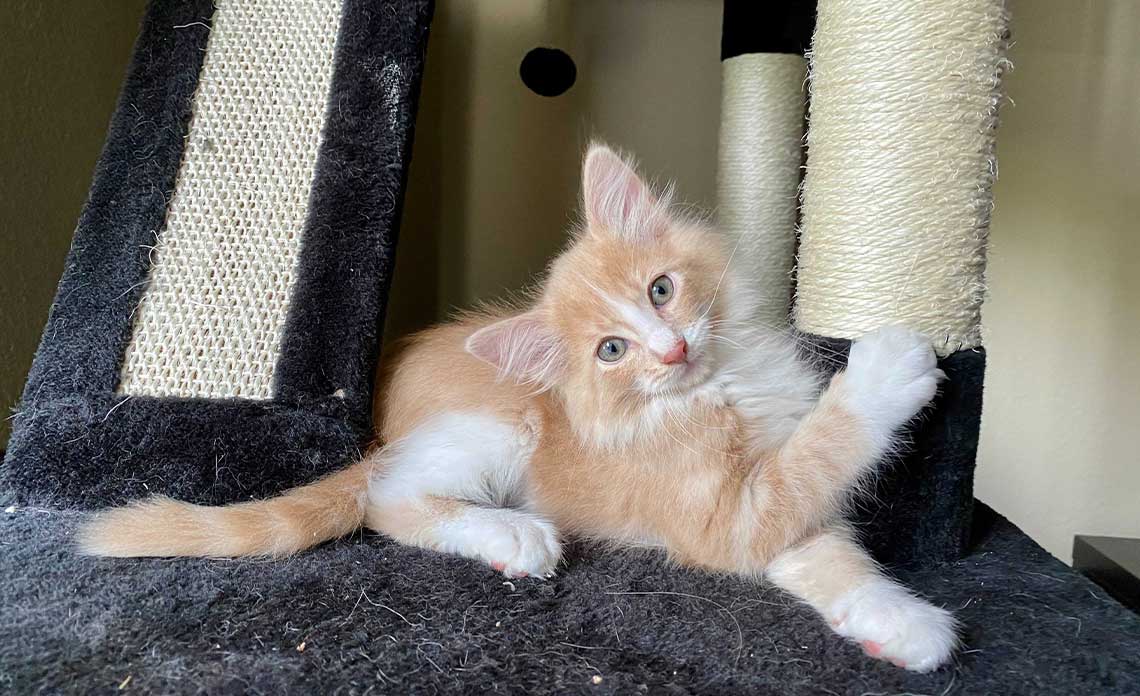Cat declawing is a controversial topic in the world of pet care. It’s a procedure that involves either amputating the last digit of a cat’s toes or severing the tendons attached to the cat’s claws. While some may consider declawing as a solution to prevent furniture damage or scratches, it’s essential to understand the implications it has on our feline friends. In this blog post, we will explore the reasons why Operation Kindness, and many other animal welfare organizations, strongly advise against declawing cats. Not only is it a painful procedure, but it also leads to various physical complications and behavioral issues.
The physical complications of declawing
After declawing, 25% of cats develop physical complications. These complications can be severe and painful, making it clear that declawing is not a benign procedure. Here are some of the physical issues that declawed cats may face.
- Risk of Injury or Death – Declawed cats are at an increased risk of injury or death from other animals since they are unable to defend themselves or climb certain surfaces. Even declawing a cat only in the front puts the cat at risk. Many people mistakenly believe that a cat can protect itself by kicking with its back feet, but this method requires the cat to be in a vulnerable position.
- Loss of Natural Behaviors – Cats have an instinctual need to use their claws to climb, exercise, stretch and mark their territory. Declawed cats lose these natural behaviors, which can negatively affect their well-being.
- Biting Behavior – Without claws for defense, declawed cats may resort to biting to protect themselves, leading to problems for both the cat and their owner.
- Abandonment – Many declawed cats are abandoned due to the development of unwanted behavior problems after their surgery, making them susceptible to a life without a loving home.
- Litter Box Aversion – Cats often develop a strong aversion to the litter box after declawing. The surgery leaves their paws raw, and digging in the litter can cause significant pain. This association with pain may lead to permanent litter box aversion, causing stress for both the cat and their owner.
Other concerns with declawing
In addition to physical complications, there are several other reasons why declawing should be avoided.
- Regular Claw Maintenance – If you opt for the tendonectomy (severing the tendons), the cat’s claws will still need regular trimming. This maintenance requirement can be stressful for both the cat and the owner.
- Bone Growth Abnormalities– In some cases, the bone may try to grow back abnormally under the skin after declawing, causing severe pain and discomfort for the cat.
- Stiff Joints and Altered Gait – In either type of surgery, since the tendons are severed, the joints can stiffen, and the toes can no longer be extended. Cats may continue to “scratch” after declawing, mostly due to the cat’s desperate desire to stretch their stiff, contracted joints, not evidence that the cat misses its claws. This altered gait can lead to stress on the leg joints, spine and even arthritis over time.
Cat declawing is not a simple solution to prevent furniture damage. It is a painful and potentially harmful procedure that has serious implications for a cat’s physical and behavioral well-being. Operation Kindness, along with many other animal welfare organizations, strongly discourages declawing and instead advocates for humane alternatives such as providing scratching posts, regular nail trimming and behavior training. You can learn more about these alternatives in our destructive scratching blog post.
Stay up to date
Follow us on Facebook, Instagram and Twitter for the latest news.





